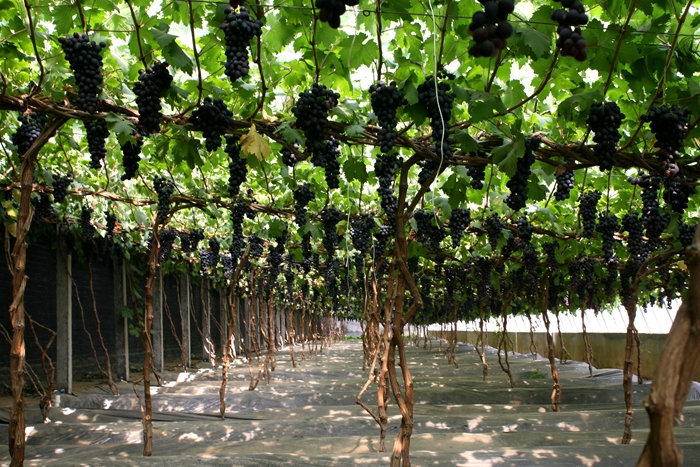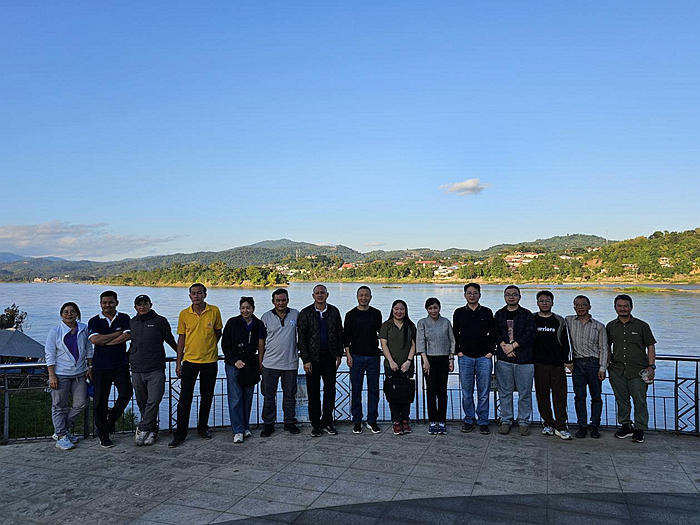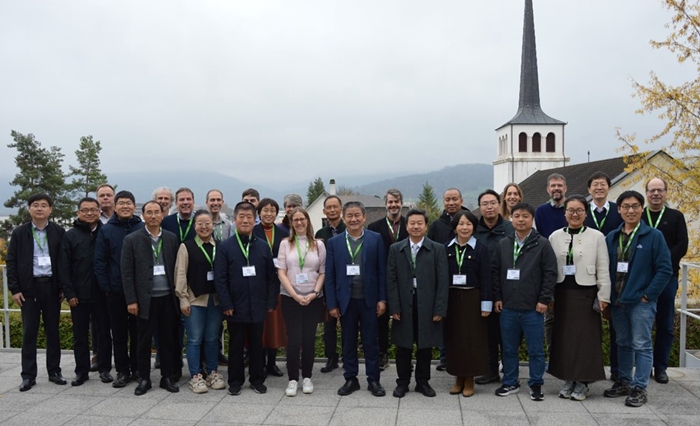Experts from the Institute of Pomology developed an efficient irrigation method for facility-cultivated grape trees at various stages of development
Recently, the research group of Haibo Wang, berry fruit cultivation and physiological innovation team at the Institute of Pomology of Chinese Academy of Agricultural Sciences (IP, CAAS), developed an efficient irrigation method for facility-cultivated grape trees at various stages of development. The results were published in the JCR Q1 journal Horticultural Plant Journal (IF: 5.7).
In recent years, China’s focus on achieving high yields, cultivating multiple species, utilizing flood irrigation, and applying excessive fertilization has resulted in challenges related to continuous cropping and soil salinization. The trend towards facility cultivation has further compounded these issues. Consequently, there is a growing need for a rapid and cost-effective way to predict the required amount of irrigation for fruit trees cultivated in facilities.
Achieving global fruit demand can be realized through the application of agricultural technologies. However, it is crucial to first overcome the enormous agricultural challenges posed by the implementation of efficient irrigation technologies. To address the issues related to inadequate water supply and inefficient traditional fruit tree irrigation methods, we propose a cost-effective and efficient approach—the “439” field precision irrigation scheme. This scheme predicts four relative soil water content minimum thresholds (RSWCTs) and maximum (RSWCTe) thresholds (relative to the percentage of field capacity [FC]) for starting and ending irrigation. By exploring the relationship between RSWCTs, RSWCTe and fruit quality, we assessed the scheme’s effectiveness. A practical case study was conducted on grape (Vitis vinifera L., ‘87-1’) cultivated in a facility from 2019 to 2022 to evaluate the scheme’s impact on irrigation management. The results indicate that maintaining 70%–80% FC from germination stage (GS) to end bloom stage (EBS), 70%–80% FC from EBS to veraison stage (VS), 55%–70% FC from VS to maturation stage (MS), and 55%–65% FC from MS to deciduous stage (DS) improve single grain weight (SGW). Similarly, to improve total soluble solid content, 60%–80% FC is suggested from GS to EBS, 70%–80% FC from EBS to VS, 60%–70% FC from VS to MS, and 60%–70% FC from MS to DS. To improve peel strength and fruit quality index (FQI), 70%–80% FC is recommended from GS to EBS, 60%–70% FC from EBS to VS, 55%–65% FC from VS to MS, and 55%–70% FC from MS to DS. This management tool helps farmers optimize irrigation efficiency and increase profits by growing high-quality fruit. In summary, the implementation of the “439” field precision irrigation system, coupled with fruit quality analysis, holds promise for enhancing water efficiency in precision agriculture.

Professor Haibo Wang of Institute of Pomology is the corresponding author of the paper. This research was funded by the Key R&D Project of Shandong Province (Grant No. 2022TZXD0010), Agricultural Science and Technology Innovation Program of the Chinese Academy of Agricultural Sciences (Grant No. CAAS-ASTIP-2015-RIP-04), and National Modern Agricultural Industrial Technology System Construction Project (Grant No. NYCYTX-29-ZP). Original title: an efficient irrigation method for facility-cultivated grape trees at various stages of development.
Link:https://www.sciencedirect.com/science/article/pii/S2468014124002085
By: Xiaolong Wang
(wangxiaolong01@caas.cn)
-
 Jan 21, 2025IAED-CAAS Delegation Visits Thailand for Scientific Cooperation
Jan 21, 2025IAED-CAAS Delegation Visits Thailand for Scientific Cooperation -
 Dec 12, 2024Chinese Academy of Agricultural Sciences (CAAS) is launching the NARS Capacity Building through China-Africa Research Partnership Program
Dec 12, 2024Chinese Academy of Agricultural Sciences (CAAS) is launching the NARS Capacity Building through China-Africa Research Partnership Program -
 Dec 05, 2024China-CABI Project Development Workshop Held in Delémont, Switzerland
Dec 05, 2024China-CABI Project Development Workshop Held in Delémont, Switzerland -
 Dec 05, 2024Ministerial Workshop on Digital Agriculture and Rural Revitalization for BRI Partner Countries Held at CAAS
Dec 05, 2024Ministerial Workshop on Digital Agriculture and Rural Revitalization for BRI Partner Countries Held at CAAS -
 Dec 05, 2024CIAR and FGV Deepen Cooperation to Promote the Development of China-Brazil Green Agricultural Products Value Chain
Dec 05, 2024CIAR and FGV Deepen Cooperation to Promote the Development of China-Brazil Green Agricultural Products Value Chain
